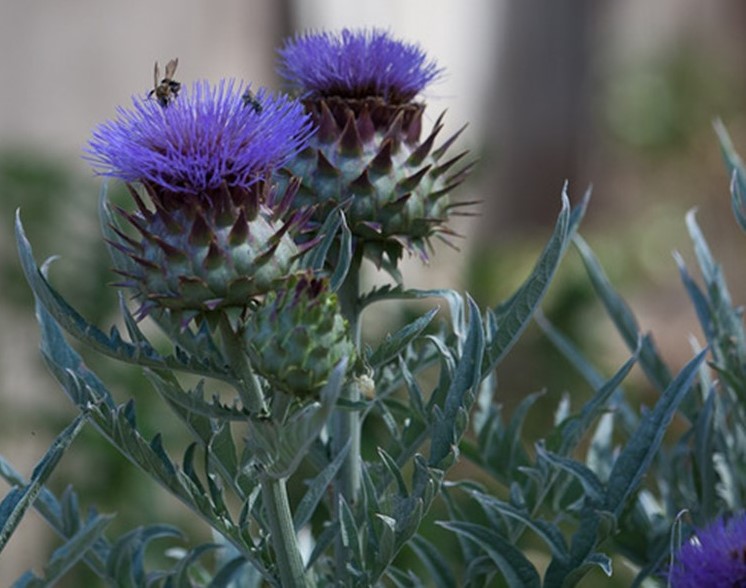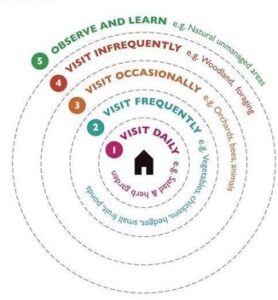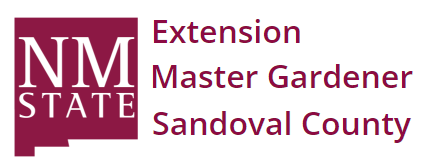Is Your Landscape Sustainable?

Is Your Landscape Sustainable?
A sustainable garden is a work in progress. This checklist provides signposts you can use along the way in your journey toward sustainable gardening.
Answer the following questions to determine how sustainable your garden is and identify opportunities to improve:
PLANT SELECTION
What percentage of the landscape features native plants and trees? What percentage is lawn?
Plants adapted to NMs unique soil and weather conditions require less water and fertilizer. Ideally, the lawn space should be <10%.
Does the landscape utilize a variety of blooming plants in different sizes, colors, and bloom times?
A variety of bloom structures, sizes, colors and bloom time attracts pollinators and other wildlife as well as ensuring they have food not just during the summer season but through all four seasons.
Does the landscape utilize companion and inter planting of flowers and herbs?
Companion planting and interplanting naturally repels unwanted pests, attracts beneficial insects and creates a healthy ecosystem reducing dependence on fertilizers and pesticides.
Do you save seeds from successful plant growth at the end of the season?
Seeds saved from plants that were successful are more likely to be successful in the future.
Does the placement of plants and trees provide natural shade to key locations of the landscape?
Proper location of plants can provide shade, block wind, and reduce noise. For example, evergreens block wind and may offer protection to other plants and wildlife. Deciduous trees planted on east, west, and southwest sides of buildings can block summer sun and warm buildings in winter.
WATER
Does the landscape feature drip irrigation with a schedule based on differing water needs?
Drip irrigation provides efficient and effective watering and can be designed to provide the right amount of water to the right place at the right time.
Do you utilize rainwater capture systems or reuse greywater?
Cisterns, rain barrels and seasonal swales can be used to capture and leverage rainwater to reduce use of community water systems. Greywater reuse can also be an effective way to reduce water usage.
Is the landscape designed to capture water in the best possible way?
Landscapes should be designed to use the natural topography to capture water and assist in the slowing, spreading and soaking of water into growing areas.
Does the landscape provide water for wildlife?
A pond or appropriately sized water feature helps attract wildlife and pollinators.
Are plants grouped by water needs and placed with water availability in mind?
Grouping plants by water use helps ensure plant health as well as efficiency. For example, high water use plants can be grouped together and placed in the vicinity of captured water to augment irrigation while low water use plants can be grouped together and watered less frequently.
SOIL
Does the landscape utilize mulch to protect soils and preserve water?
Natural mulches are critical to prevent soil erosion and to preserve water. Wood, shells, and straw are great examples of natural mulch.
How do you build the soil in areas where heavy feeding plants are grown? What type of amendments are utilized?
The regular addition of organic matter in the form of compost or plant matter on top of the soil ensures that depleted soil is replenished.
Has a soil test been conducted and results used in building the soil or plant selection?
Soil type greatly impacts the success of plants in a garden or landscape. Understanding the soil makeup is foundational to landscape planning and development over time.
What type of fertilizers are used and how frequently?
Organic, non-synthetic fertilizers utilized in proper quantities avoid pollution of water systems as well as ensuring healthy plant development.
Permaculture Zones in a Sustainable Landscape

Permaculture Graphic by HIPPERMACULTURE https://www.hippermaculture.com/
One way of designing the landscaping of a property is by considering the frequency of its desired uses. This facilitates efficient use of energy, water, and natural resources.
Zone 0, not shown on this graphic, is an indoor living space that incorporates a planned view of the outside and brings the outside in.
| Zone 1 | Zone 2 | Zone 3 | Zone 4 | Zone 5 |
|---|---|---|---|---|
| An area of intensive daily use, closest to the house. This is an area for herb and flower gardens, annual vegetable garden, rainwater catchment and structures you visit daily – (e.g. a greenhouse or a toolshed) | An area that requires attention 1-2 times/week. This is the place for perennial vegetables, dwarf fruit trees, beehives, compost bins, stables, barns. Fowl and rabbits may be housed between zones 1 and 2. This allows small animals to be close to the home for daily management – but able to reach foraging further from the house. | A farming area visited less often – twice a week to twice a month. Smaller properties may not include this zone. Here is pasture for large animals, orchards, produce for market, staple crops. (This could also include a community garden.) | An area that borders the wilderness – visited 1-2 times/year. This may be a wildlife area, or a public park. | Actual wilderness, which requires only proper conservation. Is there consideration of flood/ forest fire risk from the wilderness area? |
Resources:
From Albuquerque Water Authority: https://www.505outside.com/
Provides watering instructions for trees, plants and turf; gives suggestions for efficient irrigation and landscaping
From NMSU: Xeriscaping for beautiful gardens and water conservation
From Office of the State Engineer: https://www.ose.state.nm.us/WUC/wuc_homeOwners.php
Books:
Carrots Love Tomatoes Secrets of Commpanion Planting for Successful
Gardening by Louise Riotte
Gaia Garden: A Guide to Home-Scale Permaculture by Toby Hemenway
Plant Partners, Science-Based Companion Planting Strategies for the Vegetable Garden by Jesssica Wallsier (Storey Publishing: 2020). This book covers plant selection and pairing for soil improvement, weed management, pest management, disease management, pollination and biological control. All the research used for the chapters is listed in the book.
Permaculture by David Holmgren. Holmgren Design Services Pub 2002. (pages 138-141)
Practical Permaculture. By Jessi Bloom & Dave Boehnlein. Timber Press publisher 2015. (pages 100-105)
Teaming with Nutrients: The Organic Gardener’s Guide to Optimizing Plant Nutrition by Jeff Lowenfels
